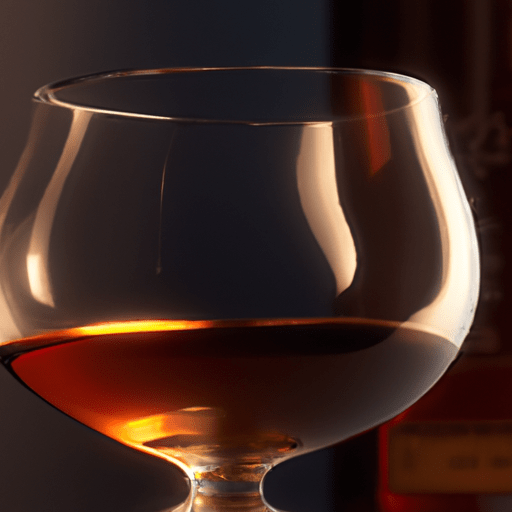The Unique Versatility of Cognac in Cooking: A Culinary Delight
Cognac, often referred to as the “King of brandies,” enjoys an esteemed reputation in the world of spirits. While it’s widely celebrated for its sipping qualities and historic allure, this exquisite French brandy also carries a delectable potential in the culinary realm. In this article, we uncover the fascinating world of cooking with cognac, exploring its taste, common uses, nutritional value, and fascinating historical facts.
Taste Profile: A Symphony of Flavors
Cognac boasts a complex flavor profile that elevates dishes to exquisite heights. Its aromatic intensity, rich earthiness, and distinctive smoothness make it an excellent addition to a wide range of culinary creations. The flavor nuances of a fine cognac often consist of:
- Fruitiness: Cognac offers notes of dried fruits, such as raisins, apricots, and prunes, which impart a natural sweetness to dishes.
- Spices: A well-aged cognac may possess hints of cinnamon, nutmeg, and cloves, adding warmth and depth to sauces and desserts.
- Oakiness: The aging process in oak barrels imbues cognac with subtle woody undertones, lending a mellow complexity to numerous recipes.
Culinary Uses: Elevating Savory and Sweet Delights
Cognac’s incredible versatility in the kitchen allows it to enhance both savory and sweet dishes. Let’s delve into the various ways this exceptional brandy can elevate your culinary creations:
1. Sauces and Pan Deglazing
When cognac is used in sauces, it imparts a bold and robust flavor that amplifies the taste of meat, seafood, and mushroom-based dishes. It also aids in deglazing pans, effortlessly incorporating the fond (the flavorful brown bits stuck to the bottom) into sauces, adding depth and complexity to the final dish.
2. Flambé and Finishing Touches
The captivating act of flambéing with cognac not only adds a touch of drama to your cooking but also imparts a unique flavor. By briefly igniting the brandy, the alcohol evaporates, leaving behind a rich, caramelized taste. Cognac can also be drizzled over finished dishes or used as a final basting agent for meats to lend a sophisticated flair.
3. Baked Goods and Desserts
Cognac’s delightful fruit and spice notes make it an excellent ingredient in a plethora of baked goods and desserts. From fruitcakes and tarts to creamy tiramisu and flambéed sweets, incorporating cognac elevates these treats to unparalleled gustatory heights, tantalizing the taste buds with layers of complexity.
Nutritional Value: A Sprinkle of Health Benefits
While the primary focus of cooking with cognac lies in its flavor-enhancing properties, it’s worth noting a few potential nutritional benefits. Cognac is known to contain small amounts of polyphenols, which are antioxidants commonly found in grapes, and have been associated with various health benefits, including cardiovascular health support. However, it’s essential to remember that the quantity of polyphenols in a single serving of cognac is minimal, and moderation should always be observed when enjoying alcoholic beverages.
Fascinating History and Facts
To truly appreciate cognac’s culinary allure, understanding its historical significance adds an extra layer of fascination and appreciation. Here are a few intriguing facts:
- Cognac receives its name from the Cognac region in southwestern France, where it has been produced since the 17th century.
- The distillation and aging processes for cognac are strictly regulated by French law, ensuring its quality and authenticity.
- The aging process occurs in oak barrels, and the wood imparts not only flavor but also color—ranging from pale gold for younger cognacs to deep amber for the older and more mature ones.
- Legend has it that when a French vineyard was struck by a devastating phylloxera epidemic in the late 19th century, cognac producers played a crucial role in preserving and rehabilitating the vineyards.
- Notable chefs have long cherished cognac in their recipes, including Julia Child, who often used it to enrich sauces and desserts in her classic French cuisine.
Conclusion
Cognac’s storied history, intricate flavor profile, and culinary flexibility make it a captivating ingredient to incorporate into your cooking repertoire. Whether in rich sauces, indulgent desserts, or added flair through flambéing, this remarkable brandy possesses the ability to elevate dishes to unparalleled heights of deliciousness. With a sprinkle of history and a dash of flavor, get ready to embark on a culinary journey like no other with the extraordinary versatility of cognac.
Cognac
Origin: Cognac is a type of brandy that originated in the Cognac region of France. It is produced from white wine grapes grown specifically in this region. The traditional distillation and aging processes involved in making Cognac have been developed over centuries.
Common Uses: Cognac is commonly enjoyed as a sipping beverage, either neat or on the rocks. It is also used in cocktails such as the classic Sidecar or the famous Champagne cocktail, French 75. Additionally, Cognac can be used in cooking to enhance the flavors of dishes like sauces, desserts, and even certain savory recipes.
Nutritional Benefits: Cognac is not considered a significant source of essential nutrients. It is primarily consumed for its flavors and aromas rather than any nutritional value.
Unique Properties: One of the unique properties of Cognac lies in its aging process. Cognac is aged in oak barrels, which adds distinctive flavors and aromas to the final product. Each batch of Cognac is a blend of different-aged brandies, which contributes to its complexity and depth of flavor. Cognac is also known for its characteristic amber hue, which develops during the aging process.
Historical Significance: Cognac has a rich history that dates back to the 17th century when Dutch merchants discovered the region’s wine and realized its potential for distillation. It gained popularity across Europe and became associated with luxury and elegance. Over time, Cognac has been favored by renowned figures, from Napoleon Bonaparte to Winston Churchill. Today, it remains one of the most celebrated spirits worldwide.




Use the share button below if you liked it.
It makes me smile, when I see it.